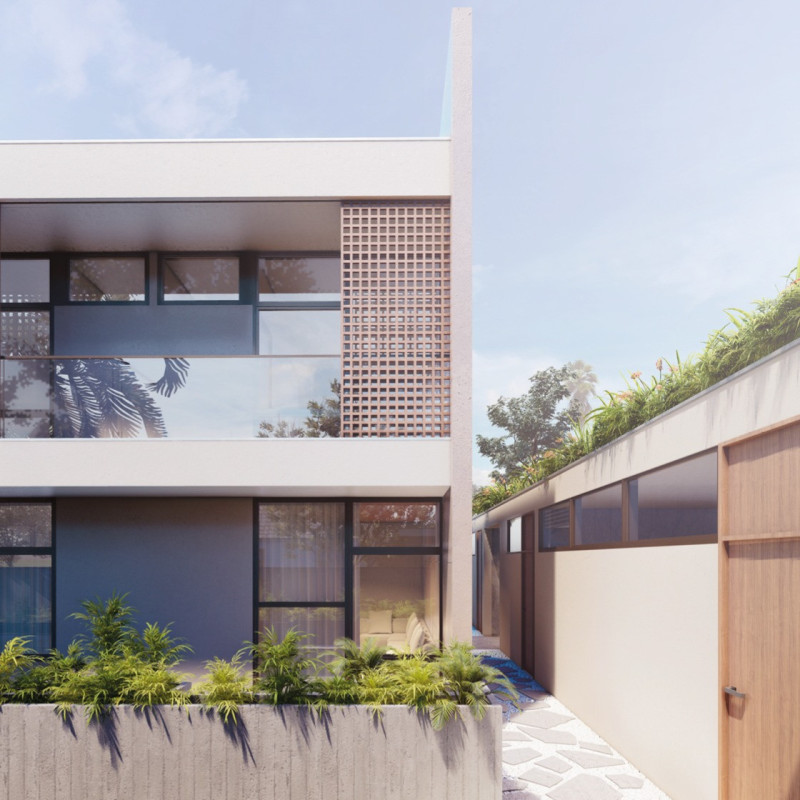5 key facts about this project
At the heart of this architectural concept lies a commitment to creating a responsive environment that adapts to its context. The building’s form is strategically designed to interact with natural light and prevailing winds, optimizing energy efficiency. Large windows punctuate the façades, inviting ample daylight into the interiors while establishing visual connections to the outdoors. This thoughtful approach not only enhances the quality of the interior spaces but also minimizes the reliance on artificial lighting, contributing to the overall sustainability goals of the project.
The materials selected for this architectural endeavor play a crucial role in defining its character and performance. The exterior is clad in a combination of locally sourced timber and durable concrete, providing a textural richness that complements the surrounding landscape. The use of timber not only adds warmth and a tactile element to the building but also supports sustainable forestry practices. Additionally, the integration of green roofs and vertical gardens not only improves insulation but also provides habitats for local wildlife, further emphasizing the project’s commitment to biodiversity.
Unique design approaches are evident in various aspects of the project. Flexible interior layouts allow for a variety of uses, adapting to the changing needs of occupants. This adaptability is a core principle of the design, ensuring that the space can evolve over time without requiring substantial modifications. Furthermore, the incorporation of outdoor terraces and communal spaces fosters a sense of community, encouraging social interaction among residents and visitors alike. These areas are carefully situated to provide privacy while maintaining a sense of openness, allowing individuals to engage with their surroundings comfortably.
The project also features innovative technologies that contribute to its sustainability and functionality. Smart building systems are integrated throughout, allowing for efficient management of energy consumption and enhancing the user experience. These systems monitor heating, cooling, and lighting, adjusting according to occupancy and external conditions, which in turn minimizes waste and optimizes comfort.
The architectural design also reflects a commitment to creating spaces that nourish mental well-being. The interplay of indoor and outdoor environments is thoughtfully curated, with areas designed for relaxation and contemplation. Natural materials and biophilic design elements have been thoughtfully selected to enhance the sensory experience, creating a tranquil atmosphere that promotes mindfulness among users.
This project is not just another example of contemporary architecture; it represents a paradigm shift towards designs that prioritize user experience, ecological balance, and community engagement. It expertly showcases how architecture can respond to the pressing issues of today, from environmental sustainability to the need for adaptable spaces.
For those interested in a deeper exploration of the architectural undertakings of this project, viewing the architectural plans, sections, and detailed designs is encouraged. These insights will provide a comprehensive understanding of the thought processes and architectural ideas that underpin this significant contribution to modern architecture. The careful thought and deliberate choices made throughout this project underscore its unique position within the urban landscape, inviting further dialogue and exploration of its many facets.


 João Pedro Chaves Da Silva,
João Pedro Chaves Da Silva,  Amanda Gabriella Michelotto,
Amanda Gabriella Michelotto, 























